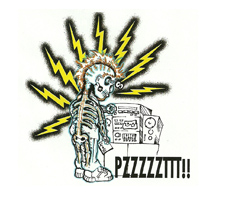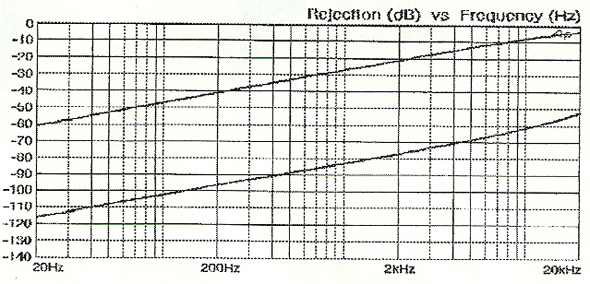
For pro to consumer interfaces, rejection of ground noise is also very desirable.
Figure 4 (below) shows noise rejection for various balanced to unbalanced interfaces, The upper plot at 0 dB represents a direct connection, such as for an adapter or adapter cable.
Direct connections are problematic because various types of balanced output circuits are used in equipment each with its own peculiar limitations.
Some, such as the one in the schematic, can be damaged if one of its output terminals is grounded. Outputs stages using either transformers or widely used “servo-balanced” outputs, must have one terminal grounded in order to produce a proper output signal at the other. But the “servo-balanced” output can oscillate or become unstable if the ground connection is made at the far (receive) end of a cable. [Reference 2]

Therefore, a cable that works with one piece of equipment may not work with another. Fortunately, adding a transformer allows the interface to work with any output stage. The middle plot shows that an output transformer reduces 60 Hz hum by about 50 dB and buzz artifacts around 3 kHz by about 20 dB. A high-quality input transformer, increases rejection to over 105 dB at 60 Hz and to nearly 75 dB at 3 kHz.
When this transformer is a 4:1 step-down type, the 12 dB level difference problem is neatly solved as well. Figure 5 shows the system schematic of this “universal” pro to consumer interface.
Bill Whitlock has served as president and chief engineer at Jensen Transformers for more than 15 years and is recognized as one of the foremost technical writers in professional audio.
REFERENCES
[1] Whitlock, B., Interconnection of Balanced and Unbalanced Equipment, Application Note AN003, Jensen Transformers, Inc., 1995.
[2] Hay, T, Differential Technology in Recording Consoles and the Impact of Transformerless Circuitry on Grounding Techniques; Audio Engineering Society, 67th Convention,1986, Preprint #1723.

